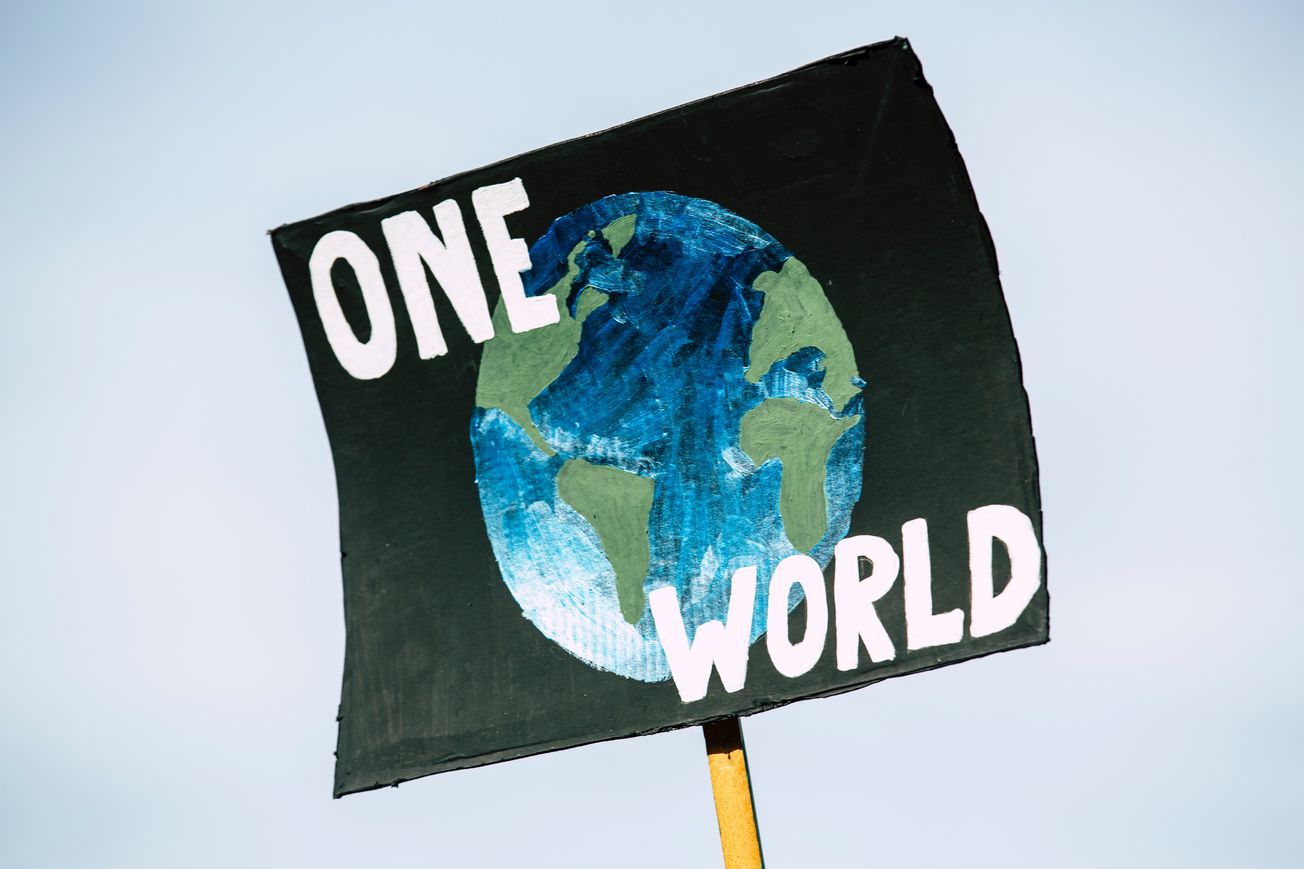By Seochan Jeon, third year, Geography
It has been nearly three months since the 27th UN Climate Change Conference (Conference of the Parties, COP27) which took place in Sharm el-Sheikh, Egypt. Human-induced climate change is still happening, whether it is visible or invisible to us.
In the UK, the annual average temperature was higher than previous records, which is unsurprising given our summer heatwaves in 2022. Plus, the global temperature was ‘1.06°C warmer’ than pre-industrial levels. The world is currently aiming to limit the global temperature rise to 1.5°C, above which the planet loses its sustained ecological resilience and extreme climatic events become more and more extreme.
No matter what the aimed temperature threshold is, the climate crisis is already globally observed, especially through 2022’s destructive floods in Pakistan for example. The global temperature increase will likely reach ‘1.5°C between 2030 and 2052’ according to the Intergovernmental Panel on Climate Change (IPCC).
The urgency of climate action has skyrocketed over the years, which was reflected in COP27’s agenda. Notably, through years of discussions and debates, global climate action has developed from target-setting to the implementation phase. The Sharm el-Sheikh Implementation Plan ‘resolves to implement ambitious, just, equitable and inclusive transitions to low-emission and climate-resilient development’.
In 2022, the international community at #COP27 agreed on several strides and breakthroughs across the board of climate action. As the world looks forward to new beginnings in 2023, implementation of climate commitments and pledges is the right thing to do. pic.twitter.com/n3oRsMK5jC
— COP27 (@COP27P) December 31, 2022
Loss and damage funds
One of the biggest achievements at COP27 was the establishment of a loss and damage fund. Loss and damage refers to the consequences of climate change that go beyond what people can adapt to, or when options exist but a community doesn’t have the resources to access or utilise them.
For example, if a community in a small island nation is affected by climate changes such as sea level rise, that counts as loss and damage. This type of fund is necessary as climate change impacts emerge differently according to the impacted regions’ geography, economy and the capacity to deal with them.
The UN revealed its plan to provide $3.1 billion for loss and damage for the next five years, to be operational by COP28.

Climate adaptation
Climate Adaptation refers to adjustments in ecological, social or economic systems in response to climatic stimuli and their effects. Adaptation measures take many forms,
for instance, building suitable infrastructure in the face of natural disasters, and community
arrangements. At COP26, the Global Goal on Adaptation (GGA) was established to ‘enhance adaptive capacity, strengthen resilience and reduce vulnerability to climate change’.
The Adaptation Fund received $243 million for many countries that are the most vulnerable to
climate change. However, the commitment towards doubling adaptation finance from 2019 levels by 2025, which was decided as part of the Glasgow Climate Pact, was insufficient.
The earlier version of the cover text mentioned the need to develop a roadmap for doubling adaptation. The latest version has removed it. Instead, it requests Standing Committee on Finance to prepare a report on the doubling of adaptation finance
— Down To Earth (@down2earthindia) November 19, 2022
Climate mitigation
Climate Mitigation, on the other hand, means decreasing the emissions released into the atmosphere and the concentration of carbon dioxide (CO2) by enhancing sinks.
The Glasgow Climate Pact requests that countries ‘revisit and strengthen’ their climate pledges by the end of 2022, calling for a 'phasedown' of coal. This is in accordance with ‘reducing global carbon dioxide emissions by 45 per cent by 2030 relative to the 2010 level and to net zero around mid-century’, as stated in Article 23 of the pact.
It also urged the update of Nationally Determined Contributions (NDCs, long-term climate goals of each country) as soon as possibly. However, only 34 of 194 parties have submitted updated NDCs including Australia and Mexico.
Mitigation response was a core pillar at #COP27. Reducing the emission of greenhouse gases in the short run will result in important improvements in addressing the climate crisis by safeguarding the Paris Temperature Goal and keeping the 1.5 °C target within reach. pic.twitter.com/2KQ1fNpThb
— COP27 (@COP27P) December 15, 2022
Climate finance
Climate finance refers to financing drawn from public, private and alternative sources of financing that support climate mitigation and adaptation.
COP27 established the Global Environmental Facility (GEF) and Global Climate Fund (GCF) to provide resources to Parties of developing countries. The previously mentioned Adaptation Fund is also a part of climate finance.
COP27 could not fully tackle developed countries’ commitment to provide $100 billion annually for developing countries. In fact, developing countries would need to spend $2.4 trillion every year on climate-related problems by 2030, half of which would have to be funded domestically.
There have been some advancements in the international climate talks about help for the most vulnerable countries to climate change impacts, however, the opinions about support from the developed nations are quite divisive.

Higher-income countries have better adaptation with their resources, which are followed by less climate risks, although many other factors such as the geographic locations should be considered in that sense. It seems to be highly important to collect more centralised voices to address the issue as the magnitude of climate impacts is becoming severer. This is all about ‘justice’ and morality for the affected people and communities. Eventually, also, countries like the UK will be hit socially and economically with the incurred costs in developing countries.
Eventually, also, countries like the UK will be hit socially and economically
It is imperative that we do not perceive the annual climate change conference as if it was just another international conference that involves influential figures. Civil sector-level actions are very important to mobilise those in private and public sectors. That includes individual activism (in person and online), direct actions, and large events that share thoughts and plan for collective actions.
We need more political ambitions and civil actions to cope with the physical impacts, social impacts caused by climate disaster, and to bring better local and national-level action changes.
Note from the author:
This article was to introduce the University of Bristol community to the climate action agenda being discussed at the global stage. I went to the 17th UN Climate Change Conference of Youth (COY17) as the Delegate of South Korea, which is held as part of COP27. At the conference, I discussed with other delegates how we the youth (along with marginalised communities and Global South countries) can be better included in the climate policies in the name of 'climate justice.' With COY17, the youth delegates produced 'Global Youth Statement', official climate policy demands submitted to UNFCCC to refer to in decision-making for youth.
Featured image: Unsplash / Markus Spiske








